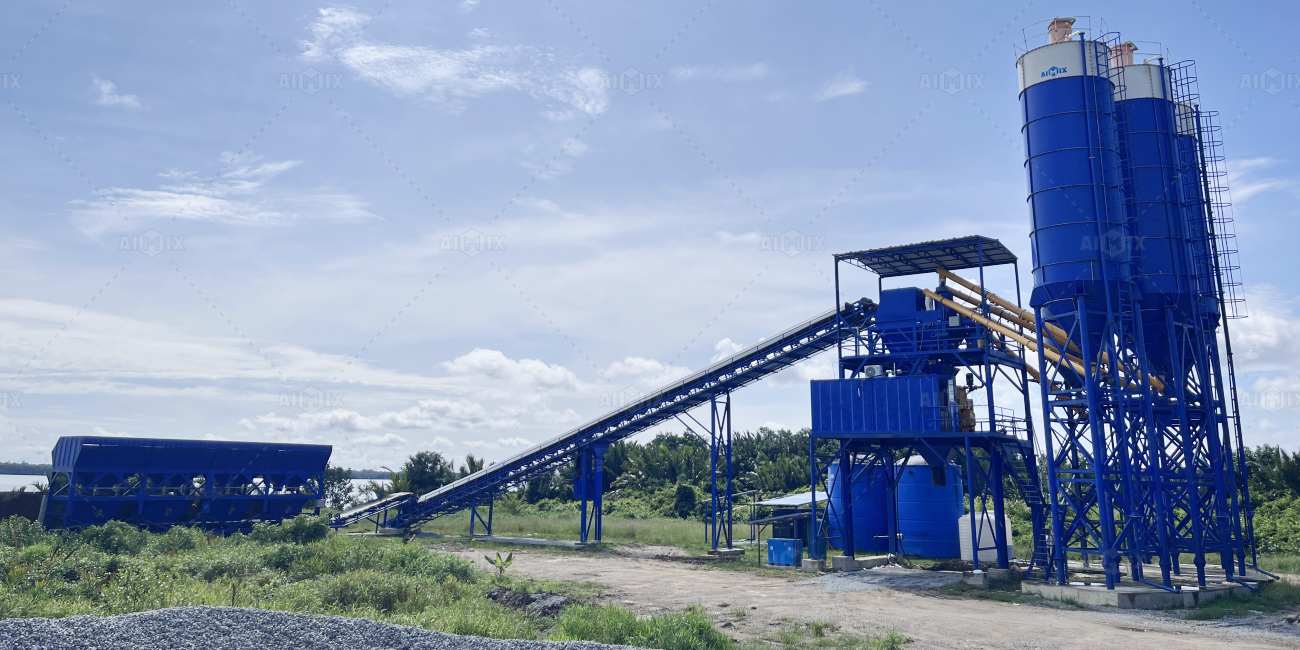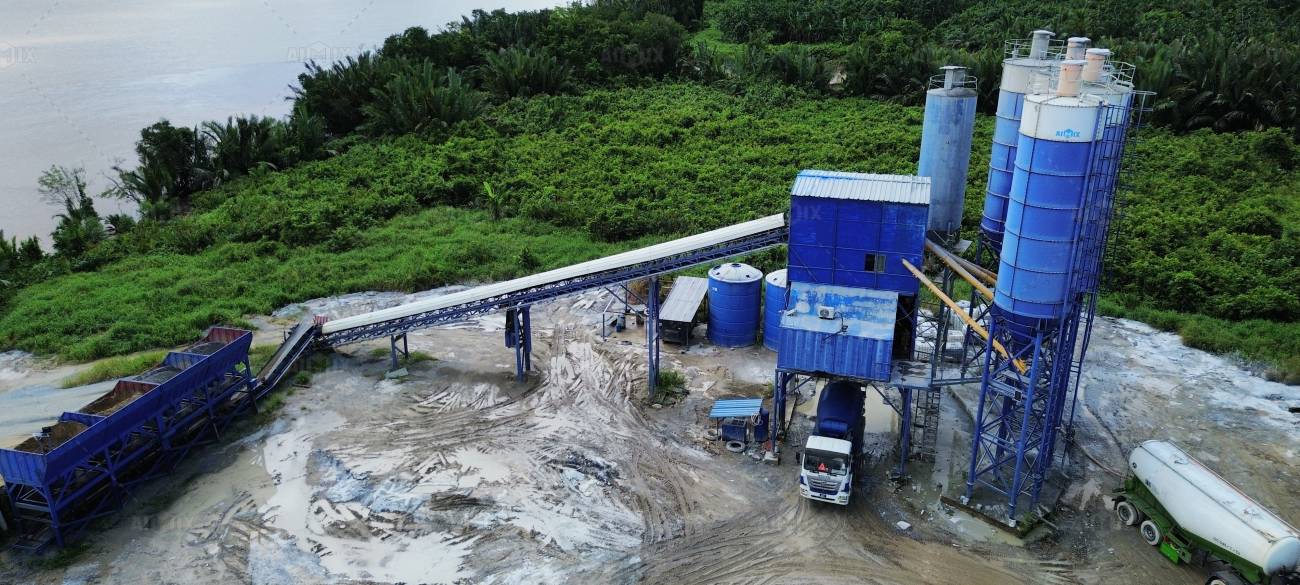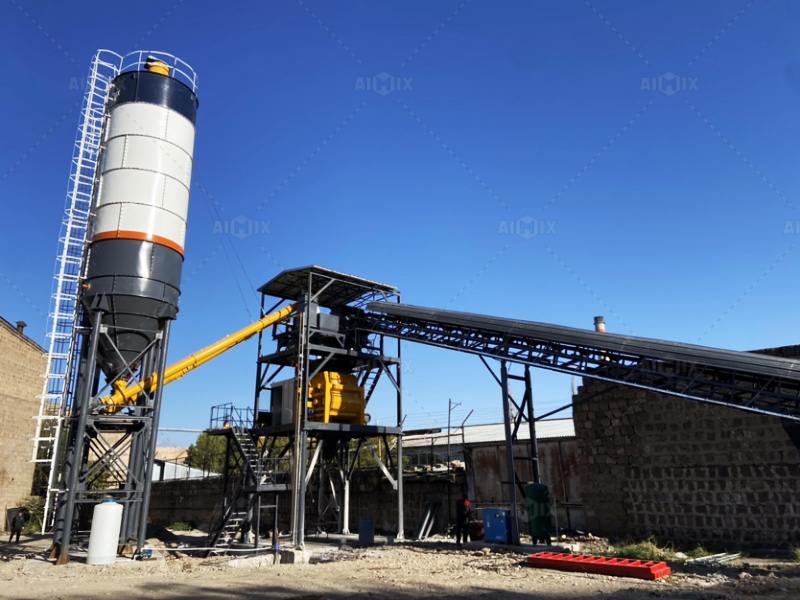The construction industry has seen rapid advancements in technology over the past few decades, and stationary concrete batching plants are no exception. As a key player in providing high-quality ready-mix concrete (RMC), these plants are crucial to large-scale construction projects, infrastructure developments, and commercial buildings. The future of stationary concrete batching plants looks promising, with innovations in automation, sustainability, and technology shaping the way these plants operate.
This article delves into the emerging trends and innovations in stationary concrete batching plant, as well as how these advancements compare to other types of concrete plants, such as mobile concrete batch plants and concrete mixing plants. By exploring how these developments will impact the industry, we can better understand the future of concrete production and its role in modern construction.

1. Automation and Digital Integration
One of the most significant innovations in the future of stationary concrete batching plants is the integration of automation and digital technologies. The introduction of automated systems in batching plants has drastically improved operational efficiency and precision. In fact, the global construction industry is witnessing a shift toward more automated and digitally controlled batching systems, with the use of software applications and touch-screen control panels becoming the standard.
With the rise of technologies such as the Internet of Things (IoT), sensors, and cloud-based solutions, stationary concrete batching plants can now monitor production processes in real-time, offering predictive maintenance, automated adjustments, and precise control over mix proportions. These innovations allow plant operators to reduce manual intervention, lower human error, and maintain consistent concrete quality. Moreover, real-time monitoring ensures that any issues can be detected and resolved quickly, improving overall plant uptime.
By integrating automated batching systems, concrete producers can achieve higher efficiency and cost-effectiveness in large-scale operations, which is particularly beneficial for continuous and high-volume production typical of stationary plants.
2. Sustainability and Eco-Friendly Solutions
As sustainability continues to be a critical focus in the construction industry, stationary concrete batching plants are evolving to meet environmental standards and reduce their carbon footprint. Future developments will likely see more emphasis on energy-efficient designs, reduced water consumption, and the adoption of recycled materials.
For example, some new stationary plants are designed with innovative technologies to recycle and reuse water, aggregates, and even the waste produced during the concrete mixing process. These plants minimize waste and contribute to sustainability goals while reducing operational costs in the long term. Similarly, the adoption of renewable energy sources like solar power for plant operations is becoming increasingly popular.
Green building practices are also influencing the design of stationary concrete batching plants, with energy-efficient motors and optimized equipment that reduce energy consumption. Manufacturers are increasingly designing these plants with eco-friendly features to meet the growing demand for environmentally responsible construction practices.

3. Improved Integration with Other Types of Concrete Plants
Another key trend is the increasing integration between stationary concrete batching plants and other types of concrete plants, such as mobile concrete batch plant and concrete mixing plants. Mobile concrete batch plants are renowned for their portability and flexibility, making them ideal for smaller, short-term projects or for construction sites with space constraints. Stationary plants, on the other hand, are preferred for large-scale, long-term projects that require consistent, high-quality production of concrete.
However, as technology advances, it is becoming increasingly common for stationary and mobile plants to complement each other in hybrid systems. Contractors may use mobile plants for certain on-site mixing and batching operations, while stationary plants serve as the primary production hub for mass concrete supply. This hybrid approach offers both flexibility and efficiency, as the mobile plant can be relocated to different job sites while the stationary plant ensures continuous production for larger projects.
This synergy between mobile and stationary plants can help contractors optimize costs, reduce delays, and streamline logistics, ultimately improving project timelines.
4. Advanced Material Handling and Mixing Technology
The efficiency and quality of stationary concrete mixing plant depend heavily on the material handling and mixing technology incorporated into the system. Future innovations are likely to focus on enhancing these components to further improve production efficiency and concrete quality.
Stationary batching plants are expected to adopt more advanced material handling systems, such as automated conveyors, hoppers, and weigh systems that can more accurately control the flow of raw materials like cement, sand, and aggregates. With greater precision in material handling, stationary plants will be able to produce concrete mixes more consistently, minimizing wastage and improving overall quality.
In addition, improvements in mixing technology are expected, with manufacturers introducing high-performance mixers that can provide faster, more thorough mixing of concrete. These innovations will allow for better consistency in concrete production, which is especially important for large-scale projects requiring uniform mix designs. Such advancements can help optimize plant throughput, reduce energy consumption, and increase productivity.

5. Cost-Effective Operations through Smart Technology
The future of stationary concrete batching plants will be significantly influenced by the adoption of smart technologies. Artificial intelligence (AI) and machine learning algorithms are being integrated into batching systems, enabling these rmc concrete batching plants to optimize operational efficiency automatically. For instance, AI systems can analyze historical data to predict and adjust for the most efficient production schedules, minimizing downtime and maximizing plant productivity.
Moreover, machine learning can be used to predict and prevent maintenance needs, reducing the likelihood of unexpected breakdowns. This predictive maintenance capability helps reduce maintenance costs and downtime, allowing operators to schedule maintenance activities during non-peak hours, which further improves plant profitability.
Using smart technology, stationary concrete batching plants will become more cost-effective and responsive to changing demands, ensuring that contractors can deliver high-quality concrete on time and within budget.
6. Increased Focus on User-Friendly Interfaces
Another important trend in the future of stationary concrete batching plants is the increased focus on user-friendly interfaces. As batching systems become more automated and complex, manufacturers are placing greater emphasis on creating intuitive, easy-to-use control panels and software interfaces for plant operators. These interfaces will allow operators to quickly adjust mix designs, monitor plant performance, and troubleshoot any issues with minimal effort.
The rise of touch-screen interfaces, remote monitoring, and real-time data analytics will simplify plant operation, reducing the need for specialized training. This not only makes plant management more efficient but also lowers labor costs by making it easier for workers to operate the equipment.
7. Cost Reductions and Increased Availability of Concrete Batching Plants for Sale
As technology evolves and production methods improve, the cost of stationary concrete batching plants is expected to decrease. With mass production, increased competition, and more efficient manufacturing processes, concrete batching plant manufacturers will be able to offer lower prices without sacrificing quality. This price reduction will make stationary concrete batching plants more accessible to smaller contractors and businesses, increasing their availability and usage in a broader range of projects.
Additionally, manufacturers will offer flexible options for batch plants for sale, including customized designs and configuration options that cater to various project needs, offering flexibility for contractors seeking the best solution for their business.
Conclusion
The future of stationary concrete batching plants is bright, with ongoing innovations aimed at improving efficiency, sustainability, and cost-effectiveness. As automation, digital integration, and energy-efficient technologies continue to shape the industry, these plants will become increasingly powerful tools for large-scale construction projects. By adopting advanced mixing technologies, improving material handling systems, and embracing smart technology for predictive maintenance, contractors can significantly optimize their operations and deliver high-quality concrete on time and within budget. Additionally, the integration of stationary plants with mobile concrete batch plants and concrete mixing plants will offer contractors greater flexibility and scalability, ensuring that they can meet the demands of both large and small projects with ease. Ultimately, these advancements will make stationary concrete batching plants more accessible, efficient, and essential to modern construction.
